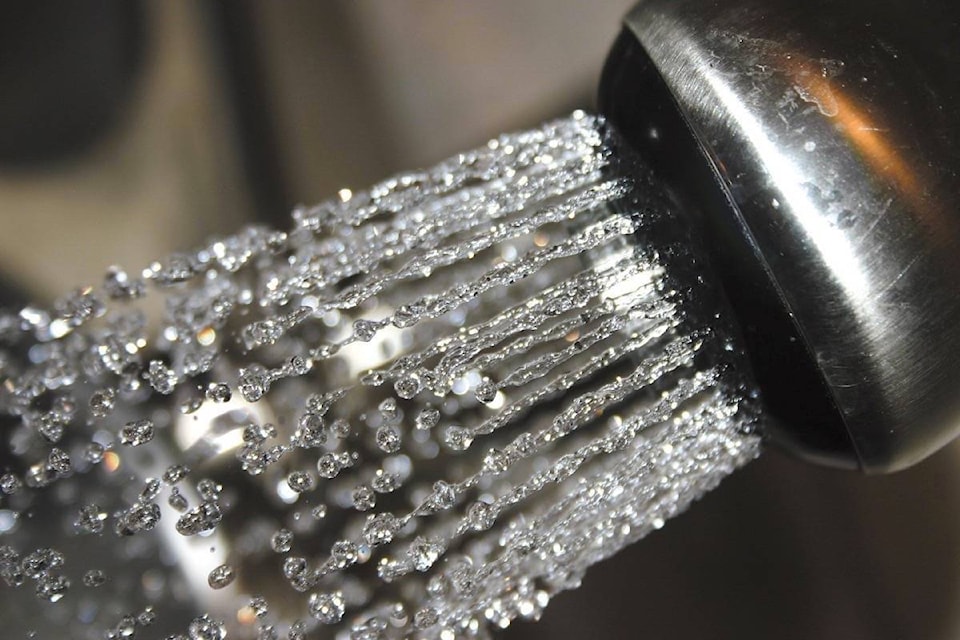A growing population combined with still-high water usage rates will add millions to Mission’s share of the bill for a new collector well.
Meanwhile, Mission Mayor Pam Alexis says that installing water meters on more homes remains a goal, although the district still hopes to get funding for the costly project.
The central issue for both communities is that of Mission’s high water usage rates, and Abbotsford’s comparatively low water use. The two municipalities share a water system, funding for which is based on how much H20 the respective communities use.
Mission homeowners use, on average, twice as much water as their Abbotsford counterparts, who are more likely to be on water meters. And although Abbotsford’s larger-scale businesses use more water than their counterparts across the Fraser, it’s not enough to make up for the huge hydration requirements of the average Mission resident.
That’s going to cost Mission going forward, especially with the thirsty community also expecting to grow at a faster rate than its neighbour.
The two communities are currently planning to build a new collector well to provide enough water for decades to come. The price tag of the first phase of the project is estimated to be about $73 million, with a second phase expected to cost another $12 million.
As a growth-related project, that money will come from development cost charges that the two municipalities levy on developers building new residential, commercial and industrial projects.
Earlier this month, a joint committee meeting agreed to update those figures to reflect usage in the two communities.
Under the previous price-sharing scheme, Abbotsford’s share of the $73 million had been pegged at $64.1 million, compared to Mission’s $8.9 million. But the communities have agreed upon a tweak that will see a $6 million shift in the cost for the collector well to the respective communities.
Mission’s share of the bill will increase by that amount, to around $15 million, with Abbotsford’s shrinking concurrently.
RELATED: Location eyed for possible collector well
Alexis said the funding shift “wasn’t unexpected.” She said the district knows it needs to conserve more water, and that water meters would incentivize residents to consider their usage more carefully.
“Certainly, I would support the metering of all households in Mission,” Alexis said – although she added that others may not feel the same way and that the issue is likely to come back to council in the near future.
“I know how much more we could save as a result of metering.”
Water meters are installed on all new homes in Mission, but many older houses don’t have the devices and play a flat water fee.
The subject of water meters has occasionally arisen in the past, but has encountered resistance by those who don’t want their usage linked to how much they pay. But officials have said there is little incentive for residents to conserve if they are billed a flat rate that doesn’t reflect how much water they use.
But installing new water meters is expected to be extremely costly.
In 2017, the district projected that buying and installing 9,000 meters and associated hardware would cost around $15.5 million.
Wastewater infrastructure plans are also impacted by Mission’s usage.
Most of the water delivered to residents ends up either going down a drain or into a sewer pipe.
That leaves the average Mission person also disposing of almost twice as much, which in turn puts more pressure on sewer infrastructure.
Over the last couple years, plans to build the new collector well have taken shape, with an eye on ensuring Abbotsford and Mission have enough water as they welcome tens of thousands of new residents.
The well would be built on Matsqui Prairie, adjacent to the Fraser River. A treatment facility would be located nearby.
A collector well is a large well dug into the ground near a surface water source like a lake or river. The well draws from the groundwater, which is continuously charged by the nearby surface water. Prince George also employs such a well.
Plans released in the spring suggested construction on the well could start around 2022, with the facility starting to operate in 2024.
The collector well is more than $200 million cheaper than the Stave Lake plan pitched to residents as an imminent need a decade ago.
That plan was rejected in a referendum, and the ensuing years saw water conservation efforts reduce the urgency of the need for a new supply.
In the last five years, water consumption has risen about two per cent, well below the growth rates of Abbotsford and Mission.
@ty_olsen
Do you have more information? Email: tolsen@abbynews.com
Like us on Facebook and follow us on Twitter
